
Mr. Driller is a puzzle video game franchise created by Yasuhito Nagaoka and Hideo Yoshizawa for Namco. The eponymous first game was released in 1999 for arcades and several home consoles, such as the PlayStation. Gameplay in the series consists of controlling Susumu Hori, the titular Mr. Driller, or one of his friends and destroying colorful formations of blocks to make it to the bottom of a well. In order to survive, players need to collect air capsules to replenish their depleting oxygen and avoid being crushed by falling blocks.

Cooking Mama is a cookery simulation-styled minigame compilation video game for the Nintendo DS, and it was later ported to iOS as Cooking Mama: Lets Cook! in 2015. It was developed by Office Create and published by Taito, Majesco Entertainment, and 505 Games. It was awarded IGN's "Best Of E3" award for 2006. It is the start of the Cooking Mama series, with 4 more main series titles on DS and Nintendo 3DS, two spin offs on Wii, and a spin off on 3DS. It also spins off into the Gardening Mama series. For later titles in the series, the publishers and Office Create joined together to form Cooking Mama Limited, which was made exclusively to develop the Cooking Mama series.
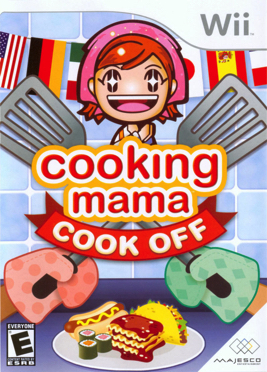
Cooking Mama: Cook Off is a video game for the Wii developed by Office Create and published by Taito in Japan, Majesco Entertainment in North America, and 505 Games in Europe and Australia. It is a spin off of the Nintendo DS game Cooking Mama. The game was released in Japan on February 8, 2007 and in North America on March 20, 2007. In Europe, it was released on May 11, 2007, with an Australian release closely following on May 18, 2007. The Wii sequel to this game, Cooking Mama: World Kitchen was released in the US in November 2008.
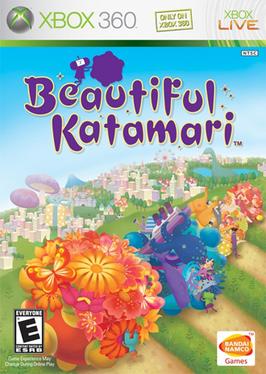
Beautiful Katamari, released in Japan as Beautiful Katamari Damacy, is a video game by Namco Bandai Games for the Xbox 360. Beautiful Katamari is the fourth game in the Katamari series of games following Katamari Damacy, We Love Katamari, and Me & My Katamari.

Cooking Mama 2: Dinner with Friends is the sequel to the Nintendo DS video game Cooking Mama and its Wii spin off, Cooking Mama: Cook Off. The game has twice as many minigames as the original, new recipes, and a new multiplayer "Cook Off" mode. The game includes voice clips similar to the ones used in Cooking Mama: Cook Off.
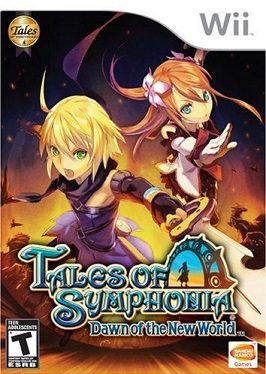
Tales of Symphonia: Dawn of the New World is an action role-playing game developed by Namco Tales Studio and published by Namco Bandai Games for the Wii as a cross of spin-off and sequel to Tales of Symphonia for the GameCube and PlayStation 2. The game was released in Japan on June 26, 2008, in North America on November 11, 2008, and in Europe on November 13, 2009.

We Ski is a 2008 skiing video game for the Wii developed and published by Namco Bandai Games. It is the first third-party game released that makes use of the Wii Balance Board.

We Cheer is a dance video game published by Namco Bandai Games.
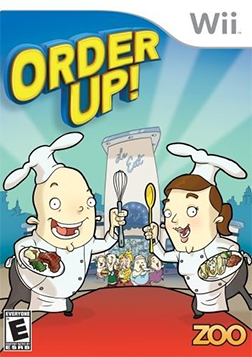
Order Up! is a cooking simulation-styled mini-game compilation developed by SuperVillain Studios and published by Zoo Games and Funbox Media. It was released on July 22, 2008 in North America, October 23 in Australia, and October 24 in Europe for the Wii. An enhanced port titled Order Up!! was released for the PlayStation 3 and Nintendo 3DS on December 9, 2011 in Europe and June 21, 2012 in North America. The game was released on iOS and Android as Order Up!! To Go.

Yummy Yummy Cooking Jam is a video game by Spanish developer Virtual Toys. It is available for WiiWare, DSiWare, PSP minis, iPhone, and iPod Touch. The game won a Pulga award for Best Art at the Videogame Industry in Spain Awards in 2009, held at the Gamelab Interactive Leisure International Trade Fair.

Muscle March, known in Japan as Muscle Kōshinkyoku, is an action video game developed and published by Namco Bandai Games for the Wii through the WiiWare service. It was released in Japan in 2009, and in North America and the PAL region in 2010. Players control one of seven different bodybuilders and try to catch a thief that has stolen their bodybuilding friends' tub of protein powder. Its gameplay is similar to Hole In The Wall, where players use the Wiimote and Nunchuck to perform specific bodybuilder poses to pass through corresponding holes in walls left by the thief.

Dragon Ball: Revenge of King Piccolo, released in Japan as Dragon Ball: World's Greatest Adventure, is a video game based on the Dragon Ball franchise. It was developed by Media.Vision and published by Namco Bandai under the Bandai label. It was released in Japan on July 23, 2009, and in other territories in October of that same year.

Pac-Man Party is a party game by Namco Bandai Games for the Wii, Windows Mobile, and Nintendo 3DS. It is similar to the Mario Party series and Monopoly games for the Wii. In the game's story mode, players must retrieve a stolen cookie recipe from Pac-Man's enemies Blinky, Pinky, Inky, and Clyde and return it to its rightful owner, Mr. Cookie. The game was released to coincide with Pac-Man's 30th anniversary. The game notably features redesigns of the main characters which would carry over to following Pac-Man titles in the mid-2010s, culminating with Ghostly Adventures.

Tank! Tank! Tank! is a 2009 third-person shooter arcade game developed and published by Namco Bandai Games. It was ported to the Wii U in 2012, where it was a system launch title in North America. Players control their respective tanks and must destroy opponents and giant mechanical monsters with a variety of weapons, such as machine guns and rocket launchers. Its gameplay has been compared to titles such as the Earth Defense Force series, through its usage of B-movie tropes and parodying.
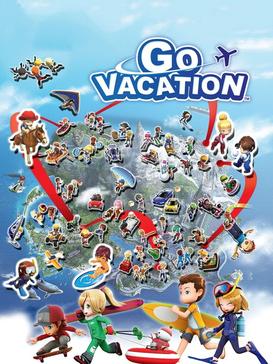
Go Vacation is a 2011 party video game developed and released by Bandai Namco Games for the Wii and Nintendo Switch. It is the third game in the We Ski series and a spin-off to the prior two main titles. Up to four players can compete against each other in over 50 sport-based minigames that take place in four fictional island resorts. Minigames range from activities such as kayaking and horseback riding, to activities like table hockey and minigolf. Different resorts can be accessed using vehicles such as trolleys and bicycles. Players can customize the outfit of their avatar and decorate their house with furniture.

Wii Sports Club is a sports simulation video game, developed by Nintendo and Bandai Namco Studios and published by Nintendo for the Wii U throughout 2013 and 2014. It is the third entry in the Wii Sports series, a part of the larger Wii series. As an enhanced remake of the 2006 Wii launch title Wii Sports, it includes five minigames that replicate Tennis, Baseball, Bowling, Golf, and Boxing, and are controlled with motion controls that replicate the sports. New to the game is additional control schemes using the Wii U GamePad, online multiplayer, and Wii Motion Plus support. Players are organized into clubs that represent different regions, and scores and stats are tracked on Nintendo's social network Miiverse. Players could also communicate with each other during and after online matches using Miiverse. Each sport can be purchased individually or rented for a certain amount of time via a pass.
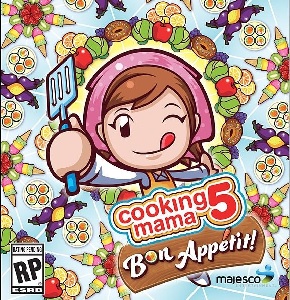
Cooking Mama 5: Bon Appétit!, released in Japan as Cooking Mama 5 and in Europe and Australia as Cooking Mama: Bon Appétit!, is the sequel to the Nintendo 3DS video game Cooking Mama 4: Kitchen Magic and is the fifth installment to the Cooking Mama series, the second on the Nintendo 3DS. It was released in Japan on November 21, 2013. It then released in North America on September 16, 2014 and in Europe on March 6, 2015. It contains over 60 recipes and new household activities/games.
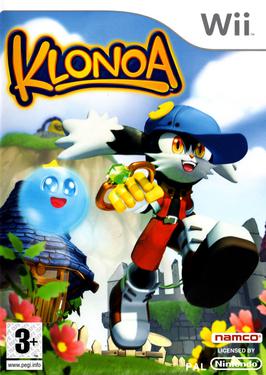
Klonoa is a side-scrolling platform video game for the Wii developed by Paon and published by Namco Bandai Games. It is a remake of the 1997 PlayStation game Klonoa: Door to Phantomile, the first game in the Klonoa series, updating the game with fully 3D graphics, additional content, and gameplay changes. It was released in Japan in December 2008 and in North America and Europe in May 2009.
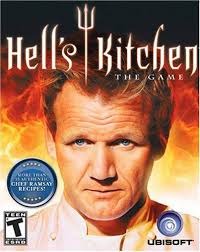
Hell's Kitchen is a time management cooking video game based on the reality competition show of the same name. It was developed by Ludia and published by Ubisoft. It features the host of the show, Gordon Ramsay as the A.I. and places the player as a chef under his guidance, while serving customers at the restaurant. It was initially released in September 2008 on the Nintendo DS, the Nintendo Wii, Microsoft Windows, and Mac OS.

Cooking Mama is a video game series and media franchise owned by Cooking Mama Limited. The series is a cookery simulation-styled minigame compilation of many video games and adventures for Nintendo gaming platforms. Generally, the gameplay revolves around performing different kitchen tasks, through the instructions of "Mama", to cook various meals. The series so far consists of five main games on Nintendo DS and Nintendo 3DS, two spin-offs on Wii and DS each, as well as a spin off on 3DS. It is also a spin-off to the Gardening Mama series. The original Cooking Mama video game was also ported to iOS. A sixth main series game, Cooking Mama: Cookstar, was released for the Nintendo Switch and PlayStation 4 in 2021.





















